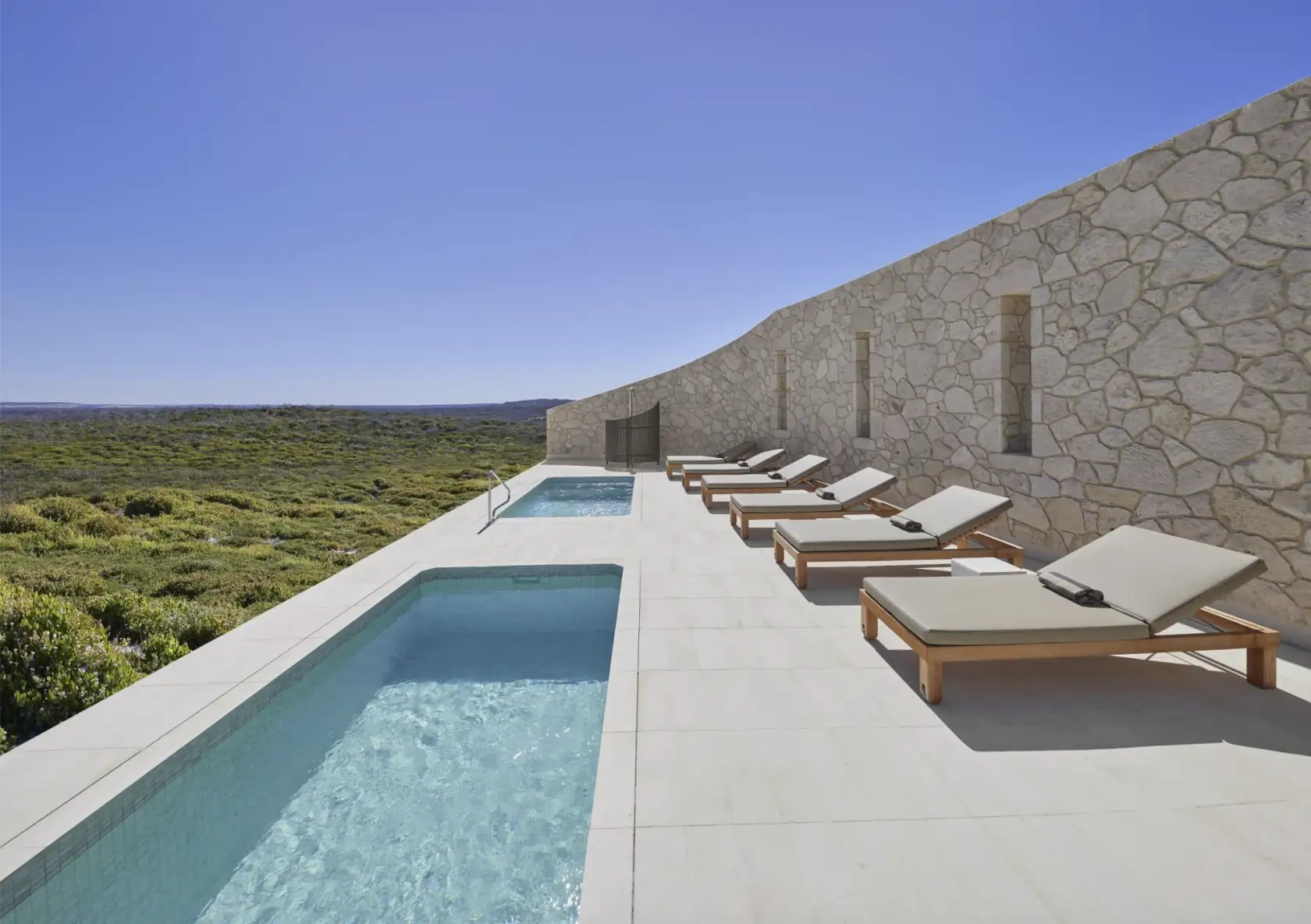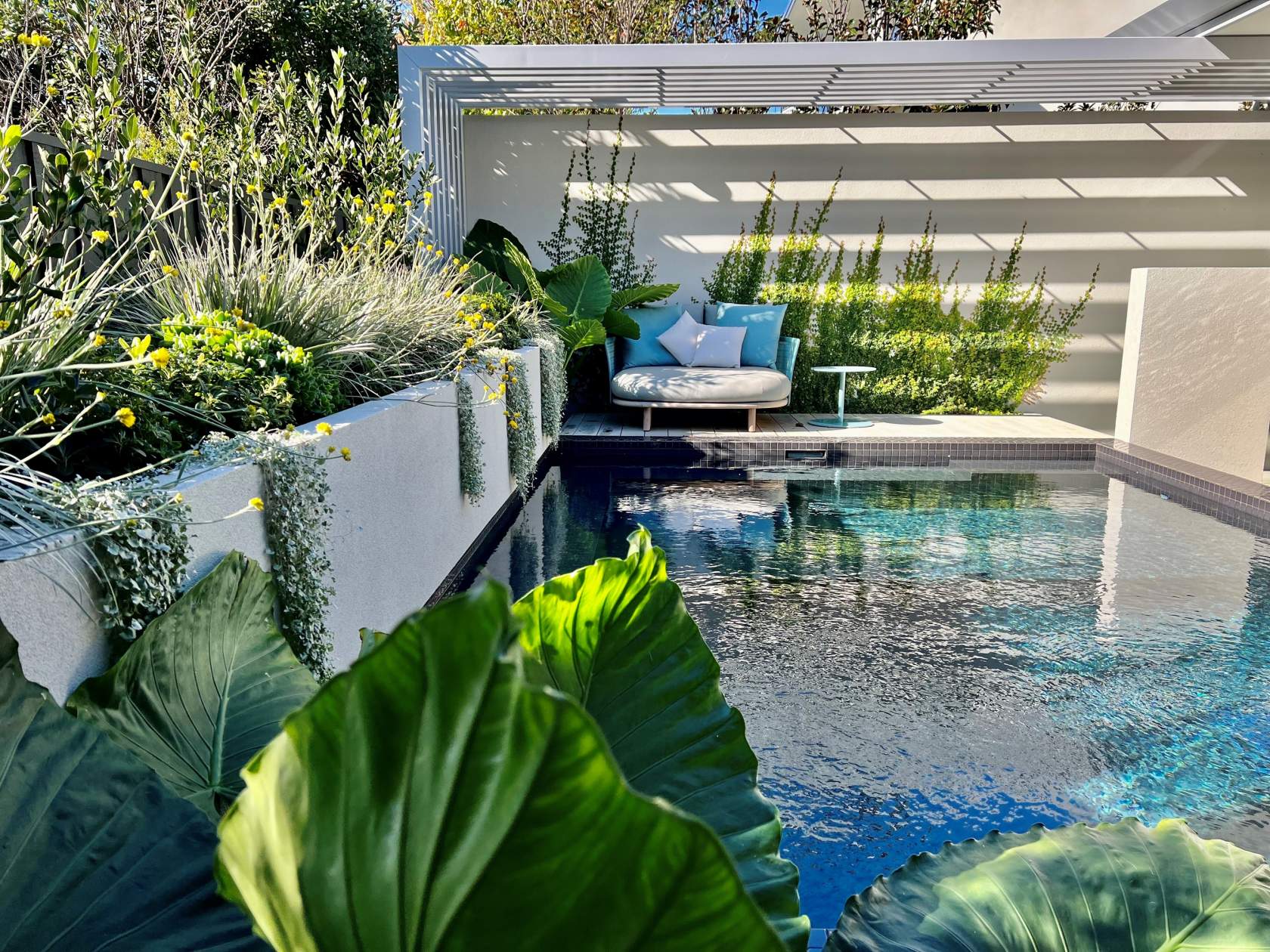

Creating an oasis with fishponds and fountains
Transforming your backyard into a serene retreat takes more than clever planting and a well-placed shade cloth. Adding extra water spaces like fishponds and fountains is a great way create a visual link to your swimming pool while fostering a strong connection with the natural environment. The result is a harmonious space that is tailor made for relaxation.
The benefits
Ponds and fountains add immediate visual appeal by creating pockets of interest in areas of the backyard that might otherwise be unused.
But they bring more benefits than just being decorative. Water features like ponds and fountains attract wildlife like frogs and birds, which helps increase the biodiversity in your backyard. That’s great news for animal populations, and not a bad result for humans either, with rich biodiversity increasingly linked to positive physical and mental health outcomes.
Who doesn’t love the sound of flowing water? Whether just a trickle, or a fast flowing cascade, water has a calming effect, promoting relaxation and relieving stress – and who couldn’t do with a bit of that?
Design ideas for fishponds and fountains
There are water feature options to suit every backyard and design aesthetic, from rugged natural options to contemporary sleek lines, you’ll find something to fit your needs.
Natural
Draw inspiration from your location and develop a pond design that mimics the natural surrounding habitat, whether that’s rainforest, coastal or mountain bushland. Use irregular shapes, rocks, and aquatic plants to blend your design seamlessly with the local landscape, creating an oasis that attracts native wildlife and enhances the aesthetic appeal.
Flourishing fountain
Fountains offer a versatile design option, ranging from classic tiered structures to modern, minimalist designs. Incorporate materials like stone or ceramic to complement your existing outdoor décor. In warmer regions, fountains also act as a cooling feature on hot summer days.
Koi haven
Koi ponds are a popular choice for fish enthusiasts and those who love a minimalist design. With their vibrant colours and graceful movements, koi fish add a dynamic and lively element to your backyard. Ensure proper filtration and depth for the health and well-being of the koi.
Health, safety and other considerations
Fishponds are exempt from pool and safety fencing requirements in most Australian states and territories, provided they have a depth of 30cm or less. Before installing, you should check with your local authority to ensure this is the case in your specific area.
In addition, you need to think about a few factors to ensure your water haven is providing the right conditions for fish and other animals.
Filtration and aeration
Proper filtration and aeration are crucial for maintaining water quality and ensuring fish health. Invest in a reliable filtration system to keep the water clean and oxygenated.
Depth and shade
Incorporating areas with different depths (ensuring none are deeper than 30cm) helps accommodate the needs of different fish species. You will also need to provide ample shading and appropriate aquatic plants to protect them from harsh Australian sunlight. This will also help regulate water temperature and support the overall well-being of your aquatic pets.
Fish compatibility
Research and choose fish species that are compatible with the Australian climate and can coexist. Native species will be well-adapted to local conditions, so do a little research first.
Birds and insects
A water feature will probably attract birds looking for a drink and a bath, adding a nice natural touch to your backyard. Ensure the pond, fountain or bird bath design factors the safety of small birds by including shallow areas for easy access.
Climate
Our climate can often be harsh, with hot temperatures, droughts and fires. Look for drought-resistant plants to place around the pond and consider installing a rainwater harvesting system to maintain water levels during dry periods.

